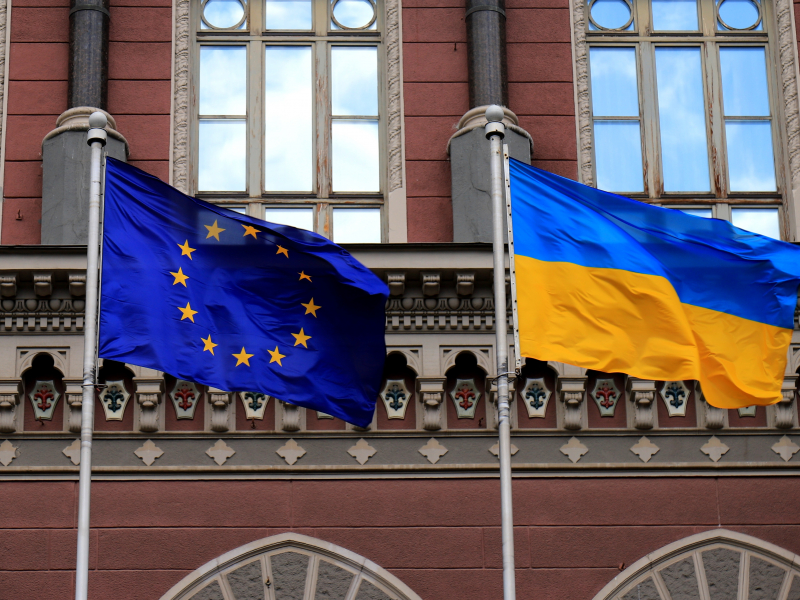Domenico Moro / 2 May 2023
Commentary no. 260
Richard Haass and Charles Kupchan recently formulated a proposal, published in Foreign Affairs magazine, to bring Ukraine and Russia around the table to discuss a peace plan. The proposal is based on the conviction that there is no military solution to the ongoing conflict, the continuation of which, in addition to increasing human and economic costs for both sides, would risk unnecessary prolongation and, in the worst case, uncontrollable escalation.
Haass and Kupchan’s idea is to continue to support Ukraine with new weapons, even more sophisticated than those supplied so far, the objective of which would be to reclaim as much of the Ukrainian territory currently occupied by Russia. Subsequently, a cease-fire would have to be agreed and negotiations started. Ukraine would not be formally asked to give up its goal of getting Crimea and the Donbass back, but this would be deferred until Putin is no longer in power. A demilitarised zone would be established, from which both Russian and Ukrainian troops would withdraw, and which would be under UN or OSCE control and whose final status would be defined when conditions are more favourable in the future. In return, the West would progressively lift sanctions on Russia and, at the same time, begin negotiations on a broader European security system.
The reason for this proposal – which must be interpreted as a further symptom of the war weariness that is beginning to seep into American public opinion – is made clear in the conclusions where it is stated that: "As a global power, the United States must acknowledge that a maximal definition of the interests at stake in the war has produced a policy that increasingly conflicts with other U.S. priorities". Since this American concern is difficult to dispute, the European Union must begin to acknowledge that the resolution of the war in Ukraine lies with it, because American support will gradually fade away.
Whilst one can agree with the idea of supporting Ukraine in a counteroffensive aimed at taking most of the territory occupied by the Russians, the political outcome hypothesised by Haass and Kupchan, is not entirely convincing. First of all, it is not certain that Putin's successor will be more open than the latter to a structural solution to the Ukrainian problem, not least because world order is changing, and it is not certain that China will be in favour of a definitive solution, whoever Putin's successor may be. Secondly, any Ukrainian counter-offensive aimed at taking over part of the territory currently occupied by the Russians could in fact result in a division of the population of the Donbass, which would continue to be a source of tension between Ukraine and Russia. In fact, the contours of the area which, according to the proposal, should be demilitarised are unclear, and creating a sort of 38th parallel in the heart of Eurasia does not seem to be a solution, especially if the Donbass were to be divided in two.
As a contribution to identifying a European plan for peace in Ukraine, initial ideas are put forward here, some of which will have to be implemented immediately and others over a period of time and with the help of global institutions, within the institutional model that was proposed in 2015 by the then Foreign Minister, Paolo Gentiloni: the De Gasperi-Gruber agreement for South Tyrol, supplemented by the second Statute of Autonomy of 1972. The contents of the latter, among other things, provide for broad political, cultural and financial autonomy and preferential treatment of the three language groups (Austrian, Italian and Ladin) for employment in the regional public sector. The 1972 agreement was signed at the United Nations to affirm the principle that any decision by the Italian government that has implications for South Tyrol must include prior information to the UN and, today, also to the EU.
If this is the reference institutional model, what steps will have to be taken in the case of Ukraine? The first step will have to be taken by the EU, which will have to be Russia's direct interlocutor for the implementation of the agreement, a condition motivated by the fact that Ukraine will become a member of the European Union. Based on this premise, the decisions that are to be taken within the framework of the agreement and entered into force immediately will have to provide for:
- the restoration of the territorial situation prior to 24th February 2022 and therefore the withdrawal of Russian troops;
- establishment of a demilitarised zone coinciding with the Donbass region, which will continue to be part of Ukraine;
- immediately extending to Ukraine, by decision of the European Council, the measures provided for in Article 42.7 of TEU on collective security. This measure will make Ukraine's entry into NATO superfluous;
- recognition of Russia’s annexation of Crimea by the entire international community.
The following measures are to be implemented over a period of approximately ten years, the minimum period for the implementation of policies similar to the De Gasperi-Gruber plan:
- the accession of Ukraine as a full member of the EU, thus anticipating initial expectations;
- the launch of a European plan for the reconstruction of Ukraine's economic, industrial and financial system.
The control of the demilitarised zone and the Ukrainian-Russian border, during the time-frame envisaged for these measures, will be ensured, according to a UN Security Council decision, by multinational troops under UN control. As for the implementation of the agreement, Ukrainian government policies that could have an impact on the Donbass provinces will have to be communicated in advance to the EU, Russia and the UN.
The goal of peace on the European continent, the basis of the European unification project, has until now been entrusted to a non-European power: the United States. The crisis of the world order post-World War II and the emergence of new interlocutors worldwide are changing the foreign policy priorities of the US, and Europe is no longer their main concern. If Ukraine's accession to the EU makes sense, the resolution of the Ukrainian conflict must therefore be the paramount responsibility of the EU as such, which, in order to be a credible interlocutor in the world, will have to equip itself with an autonomous defence. Otherwise, if the solution to the Russian-Ukrainian conflict comes from China, security in Europe, as is already partly the case in the Middle East, will no longer depend on the US, much less on the EU itself, but on China.
* Member of the Board of Directors and Coordinator of the Security and Defence Area of the Centro Studi sul Federalismo.

 En
En  It
It 



